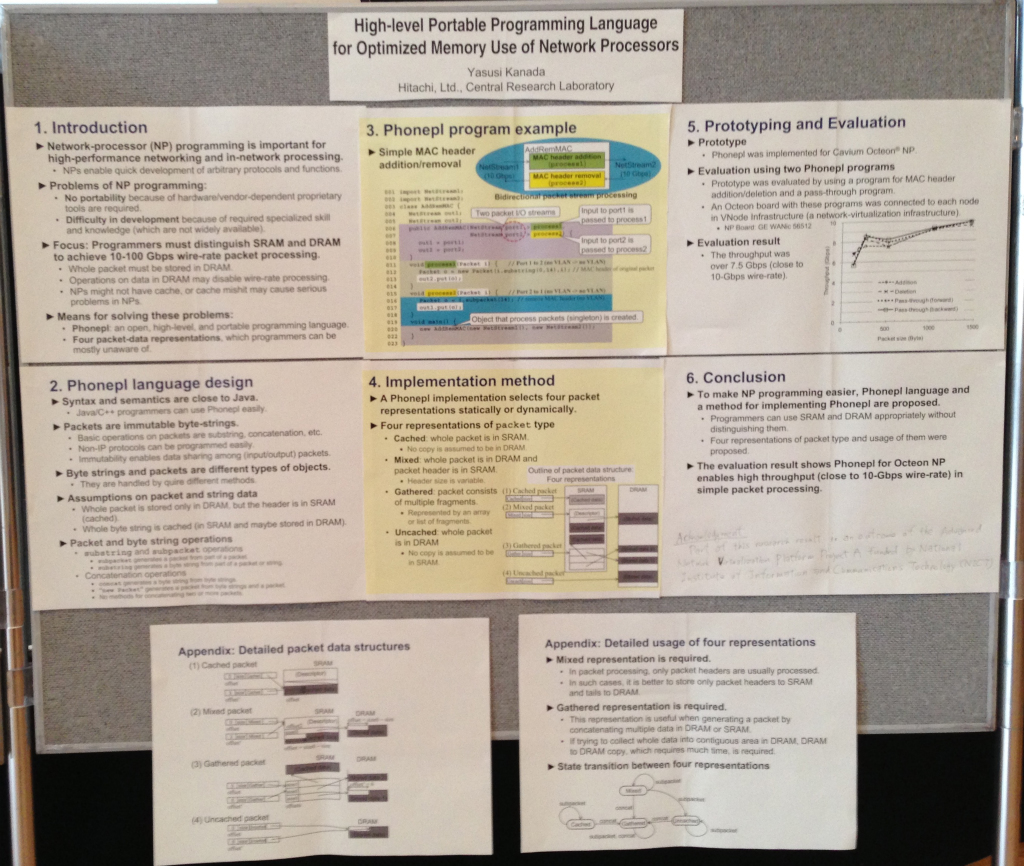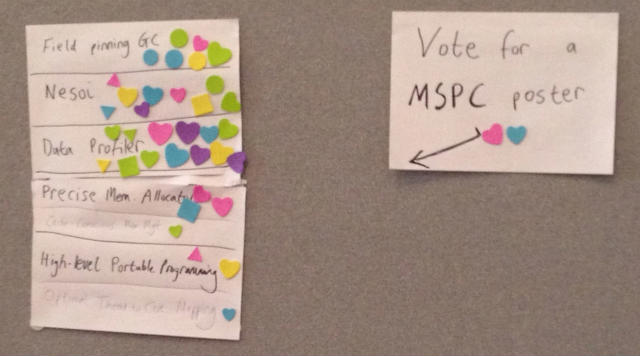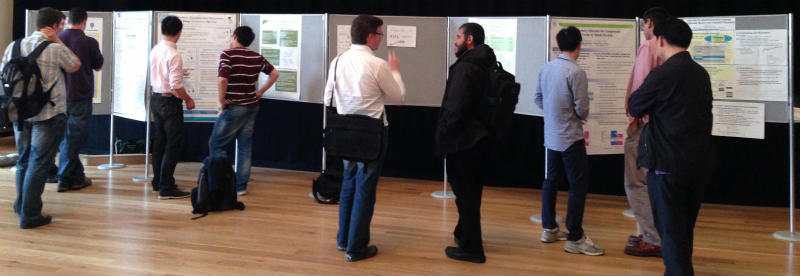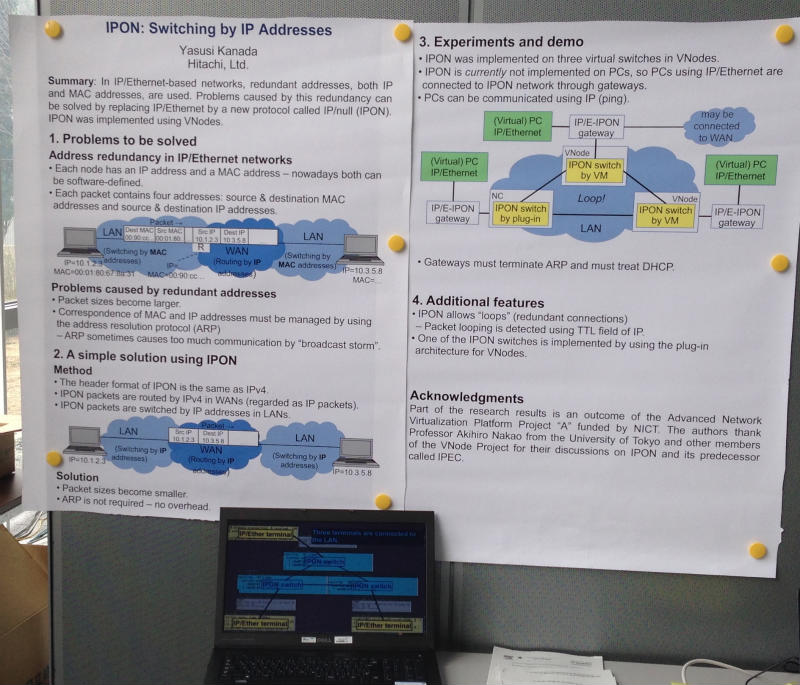Development of An Experimental Non-IP Protocol Using the Virtualization Nodes
Kanada, Y., and Nakao, A., IEICE Technical Committee on Information Networks (IN), 2010-9-2.
[ 日本語のページ ]
[ Paper PDF file (C) IEICE (in Japanese) ]
[ Slides PDF file (in Japanese) ]
Abstract: In the National Institute of Information and Communications Technology (NICT), 10-Gbps-class virtualization nodes (VNodes) that enables implementing non-IP protocols with any frame format are developed using network-virtualization technology. We have developed an experimental non-IP protocol called IPEC (IP Ether Chimera) on a virtual network us-ing the VNodes. In IPEC, the nodes learn addresses that can be hierarchical such as IP addresses using an algorithm that extends Ethernet switch learning algorithm. IPEC has the following features. First, IPEC realizes a simple single-layer non-IP protocol that has features of both Ethernet and IP. Second, because a group is the unit of learning in IPEC, it is more scalable than Ethernet, and mobile groups can be more efficiently learned. Third, this forwarding algorithm can be used in networks with loops and it can forward packets during failure using an alternative route. Group IDs can be used as locators, so IPEC can be regarded to realize an architecture that extends ID/Locator separation architecture. We implemented IPEC on VNodes, and confirmed that it enabled group learning and group mobility by experiments.
Introduction to this research theme: Policy-based Networking





